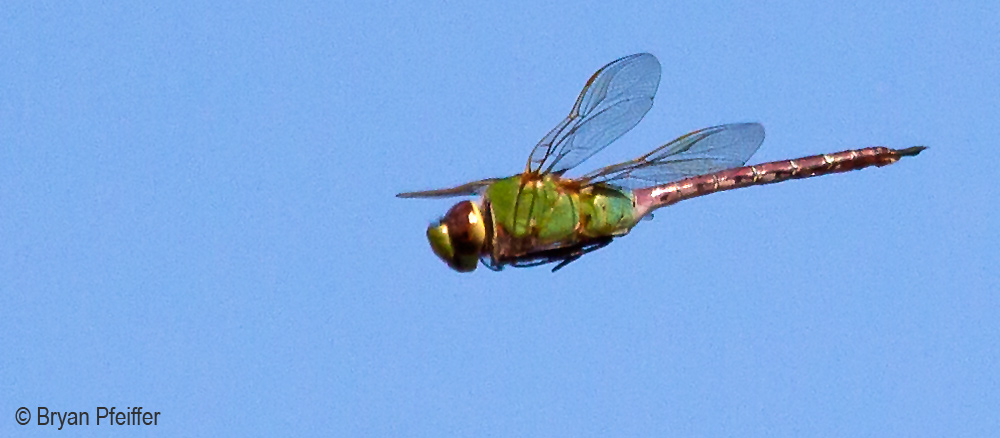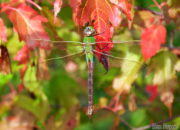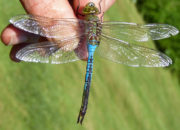 Vermont’s most widespread Aeshnidae species inhabits lakes and ponds at all elevations, perhaps less frequently at upper elevations. Owing to its itinerate and migratory nature, this large darner can appear in other habitats as well. Despite its widespread distribution, it can be uncommon at many breeding sites. Adults appearing in April, when many ponds and wetlands remain frozen in Vermont, are almost certainly northbound migrants. In the fall, southbound migrants are seen at hawkwatch sites and occasionally snatched and consumed by migrating American Kestrels (Falco sparverius).
Vermont’s most widespread Aeshnidae species inhabits lakes and ponds at all elevations, perhaps less frequently at upper elevations. Owing to its itinerate and migratory nature, this large darner can appear in other habitats as well. Despite its widespread distribution, it can be uncommon at many breeding sites. Adults appearing in April, when many ponds and wetlands remain frozen in Vermont, are almost certainly northbound migrants. In the fall, southbound migrants are seen at hawkwatch sites and occasionally snatched and consumed by migrating American Kestrels (Falco sparverius).
Conservation Status
State: S5
Global: G5
Flight Period
April 19 – November 2









